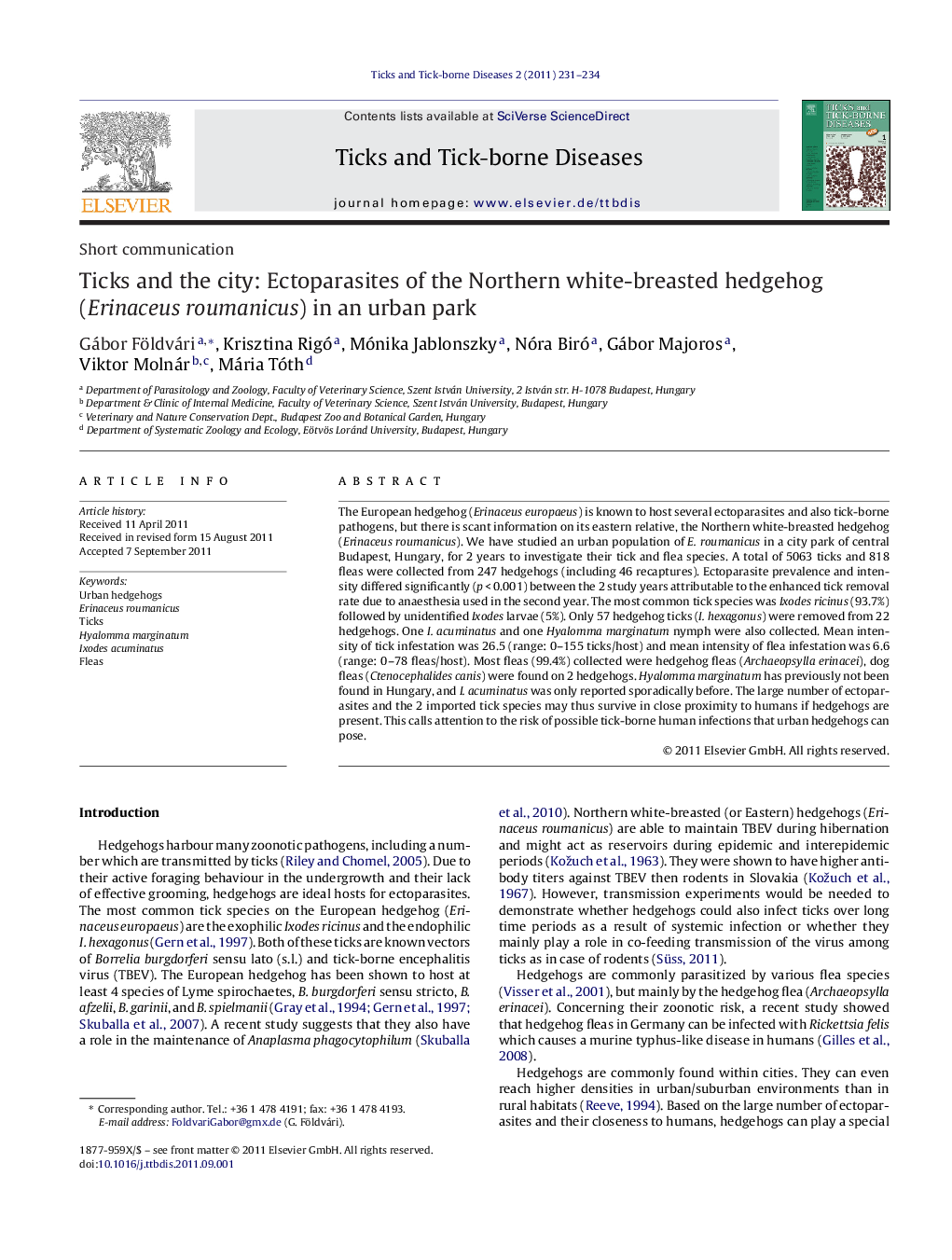| Article ID | Journal | Published Year | Pages | File Type |
|---|---|---|---|---|
| 2474299 | Ticks and Tick-borne Diseases | 2011 | 4 Pages |
The European hedgehog (Erinaceus europaeus) is known to host several ectoparasites and also tick-borne pathogens, but there is scant information on its eastern relative, the Northern white-breasted hedgehog (Erinaceus roumanicus). We have studied an urban population of E. roumanicus in a city park of central Budapest, Hungary, for 2 years to investigate their tick and flea species. A total of 5063 ticks and 818 fleas were collected from 247 hedgehogs (including 46 recaptures). Ectoparasite prevalence and intensity differed significantly (p < 0.001) between the 2 study years attributable to the enhanced tick removal rate due to anaesthesia used in the second year. The most common tick species was Ixodes ricinus (93.7%) followed by unidentified Ixodes larvae (5%). Only 57 hedgehog ticks (I. hexagonus) were removed from 22 hedgehogs. One I. acuminatus and one Hyalomma marginatum nymph were also collected. Mean intensity of tick infestation was 26.5 (range: 0–155 ticks/host) and mean intensity of flea infestation was 6.6 (range: 0–78 fleas/host). Most fleas (99.4%) collected were hedgehog fleas (Archaeopsylla erinacei), dog fleas (Ctenocephalides canis) were found on 2 hedgehogs. Hyalomma marginatum has previously not been found in Hungary, and I. acuminatus was only reported sporadically before. The large number of ectoparasites and the 2 imported tick species may thus survive in close proximity to humans if hedgehogs are present. This calls attention to the risk of possible tick-borne human infections that urban hedgehogs can pose.
